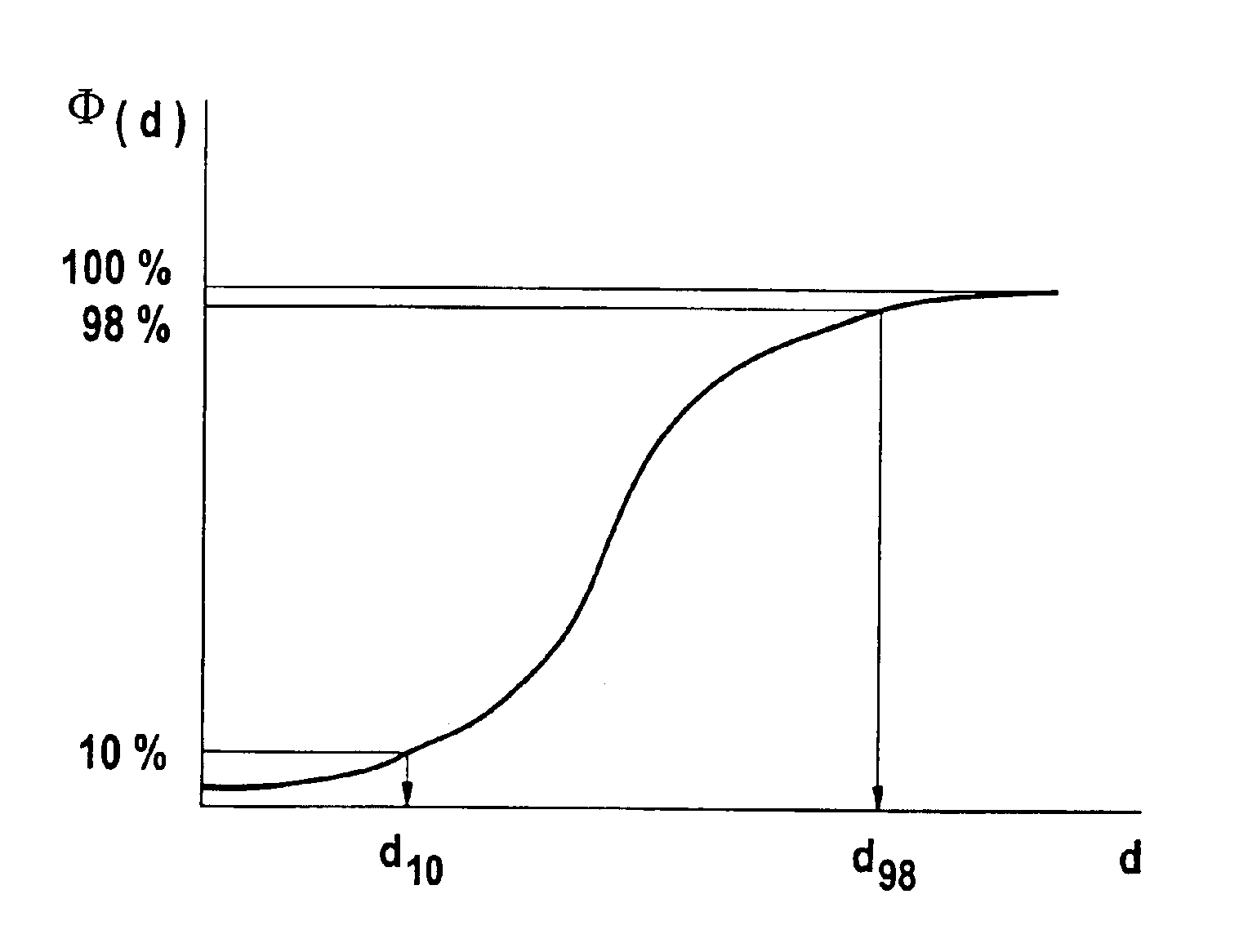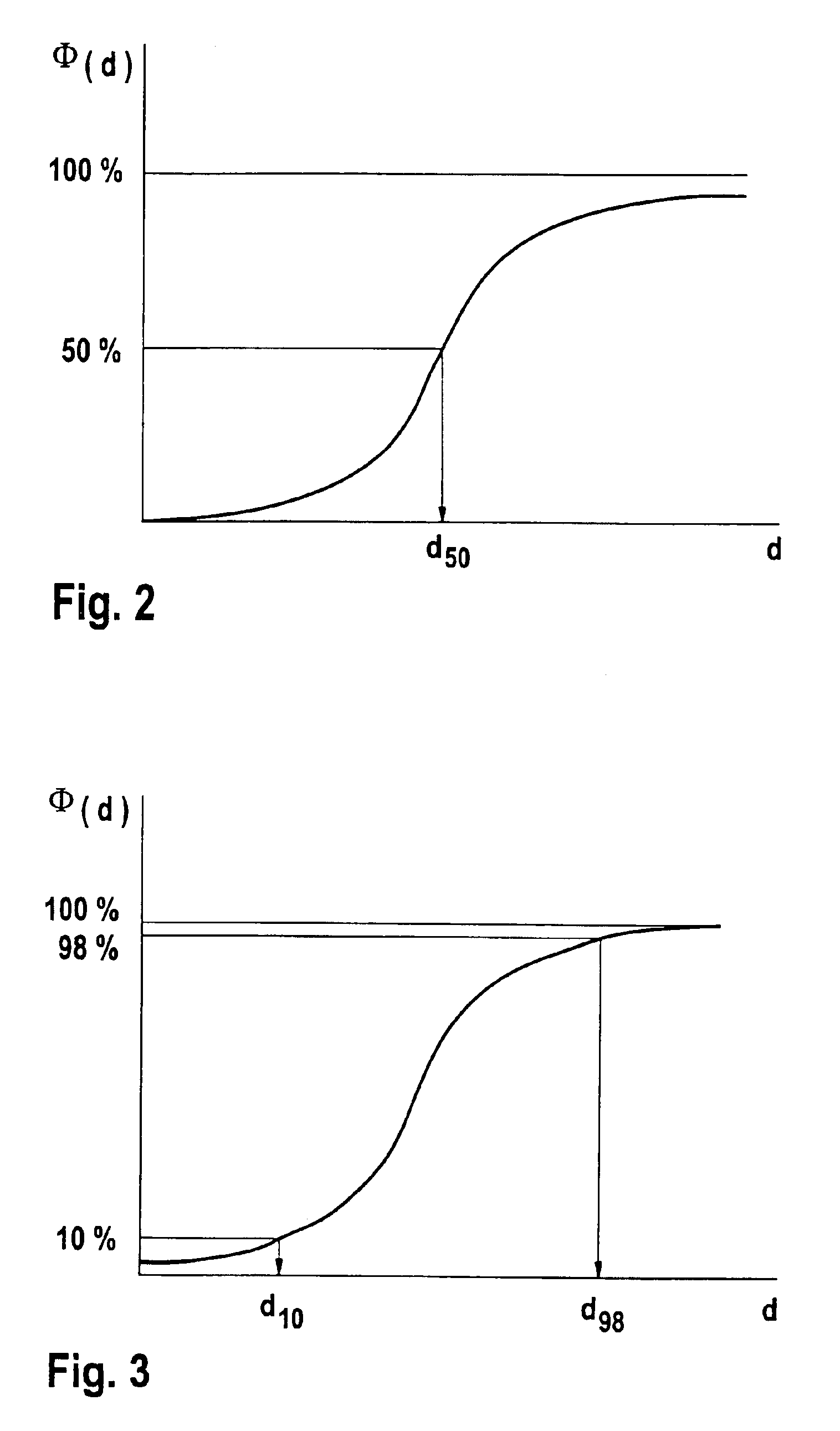Biaxially oriented polyester film which is matt on one side and has characteristic shrinkage properties, process for its preparation and its uses
a biaxial orientation, polyester film technology, applied in the direction of flexible covers, domestic articles, packaged goods, etc., can solve the problems of inability to print, inability to process, and opaqueness for many applications, and achieve the effect of low opacity, low volume opacity, and high degree of mattness
- Summary
- Abstract
- Description
- Claims
- Application Information
AI Technical Summary
Benefits of technology
Problems solved by technology
Method used
Image
Examples
example 1
[0104]Chips of polyethylene terephthalate (prepared via the transesterification process using Mn as the transesterification catalyst, Mn concentration in the polymer: 100 ppm) were dried at a temperature of 150° C. to a residual moisture content of below 100 ppm and fed to the extruder for the base layer (B). Chips of polyethylene terephthalate and a filler were likewise fed to the extruder for the nonmatt overlayer (C). In addition, chips of polyethylene terephthalate (prepared via the transesterification process using Mn as the transesterification catalyst, Mn concentration: 100 ppm) were dried at a temperature of 150° C. to a residual moisture content of below 100 ppm and fed together with the filler to the extruder for the matt overlayer (A).
[0105]Coextrusion and subsequent stepwise orientation in longitudinal and transverse direction were then used to produce a transparent, three-layer film having ABC structure and an overall thickness of 12 μm. The thickness of the overlayers ...
example 2
[0113]In a similar manner to Example 1, coextrusion was used to produce a three-layer film having an overall thickness of 12 μm. Only the composition of the overlayer A was changed. Otherwise, the conditions, in particular those in the heatsetting, from Example 1 were retained.
Overlayer (A):
[0114]100% by weight of polyester raw material, consisting of 95.5% by weight of copolyester (of 90 mol % of terephthalic acid, 10 mol % of isophthalic acid and 100 mol % of ethylene glycol) and 4.5% by weight of silica particles (SYLYSIA® 430 from Fuji / Japan) having a d50 value of 3.4 μm and a SPAN98 of 1.6
[0115]The gloss was distinctly reduced compared to Example 1.
example 3
[0116]Compared to Example 1, only the formulation of the overlayer A was changed:
Overlayer (A):
[0117]100% by weight of polyester raw material, consisting of 95.5% by weight of copolyester (of 80 mol % of terephthalic acid, 20 mol % of isophthalic acid and 100 mol % of ethylene glycol) and 4.5% by weight of silica particles (SYLYSIA® 430 from Fuji / Japan) having a d50 value of 3.4 μm and a SPAN98 of 1.6
[0118]In comparison to Example 2, the opacity is distinctly reduced and the transparency increased with virtually unchanged gloss.
PUM
| Property | Measurement | Unit |
|---|---|---|
| median particle diameter d50 | aaaaa | aaaaa |
| mol % | aaaaa | aaaaa |
| transverse shrinkage ST | aaaaa | aaaaa |
Abstract
Description
Claims
Application Information
 Login to View More
Login to View More - R&D
- Intellectual Property
- Life Sciences
- Materials
- Tech Scout
- Unparalleled Data Quality
- Higher Quality Content
- 60% Fewer Hallucinations
Browse by: Latest US Patents, China's latest patents, Technical Efficacy Thesaurus, Application Domain, Technology Topic, Popular Technical Reports.
© 2025 PatSnap. All rights reserved.Legal|Privacy policy|Modern Slavery Act Transparency Statement|Sitemap|About US| Contact US: help@patsnap.com



